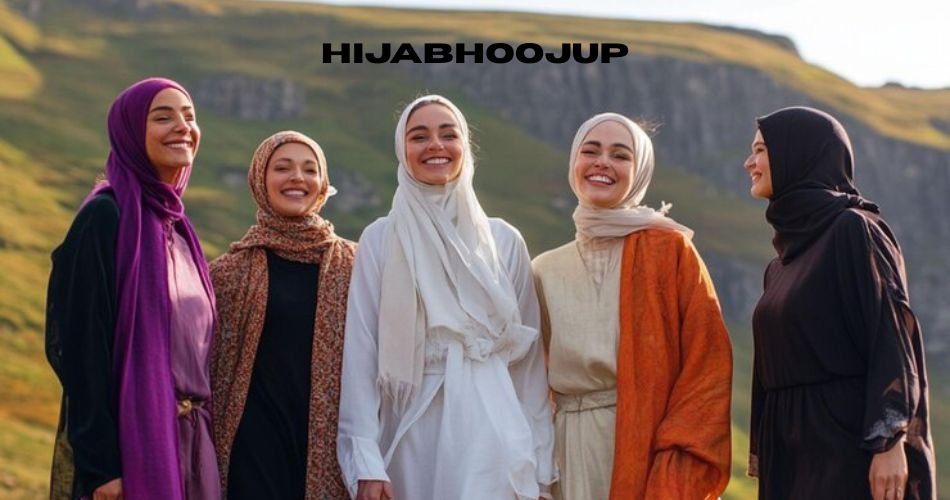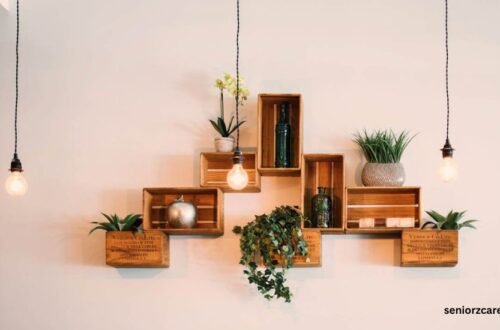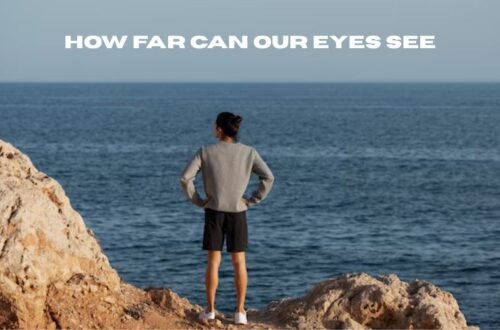The term hijabhoojup might be unfamiliar to many, but it embodies a powerful and layered concept that transcends a simple fashion choice. At its core, Hijabhoojup merges the traditional Islamic idea of hijab with a more expansive vision of spiritual modesty, cultural identity, and personal empowerment. While “hijab” typically refers to a headscarf worn by Muslim women as part of modest attire, the addition of “hoojup” reflects a deeper, more holistic interpretation. This concept encourages believers not just to cover their bodies, but to live a life of humility, dignity, and inner strength. In many ways, Hijabhoojup represents a movement, a mindset, and a message in one simple yet powerful word.
The Historical and Linguistic Roots of Hijab and Its Evolution into Hijabhoojup
To fully grasp what Hijabhoojup stands for, we must look at the origins of the word “hijab.” In Arabic, “hijab” means a barrier or partition, but over centuries, it has become closely associated with modest dress for Muslim women. However, modesty in Islam is not limited to clothing—it encompasses behavior, speech, and intentions. Hijabhoojup takes this understanding a step further by merging linguistic creativity with a renewed call for sincerity, modest living, and expressive faith. While “hoojup” may not exist in classical Arabic, its fusion with “hijab” reflects a trend where modern believers coin new terms to express timeless values in a contemporary setting. This linguistic evolution allows people to reclaim narratives and mold cultural expressions that resonate with today’s complexities.
Cultural Diversity in the Expression of Hijabhoojup Across the Muslim World
One of the most beautiful aspects of Hijabhoojup is its diversity in practice and appearance. In different parts of the Muslim world, hijab is worn in styles that reflect local traditions, climates, and aesthetics. For example, women in Iran might wear the chador, a full-body cloak; in Turkey, the silk scarf tied under the chin is popular; while in the Gulf region, women often wear flowing abayas with matching shaylas. Hijabhoojup doesn’t reject these variations—it embraces them, highlighting how cultural identity can align with religious conviction. This adaptability demonstrates that faith-based practices are not static; they evolve and reshape themselves while still honoring their core spiritual goals. Hijabhoojup is therefore both deeply personal and collectively shared, shaped by the many environments in which Muslim women live and thrive.
The Intersection of Faith and Fashion in the Age of Hijabhoojup
Hijabhoojup has brought about a revolution in the fashion industry, carving out space for modest fashion that is stylish, expressive, and faithful to Islamic principles. Once marginalized, modest fashion is now at the forefront of global trends, with major brands collaborating with hijabi influencers and designers to create clothing lines that honor modesty without sacrificing aesthetic appeal. This is more than a fashion statement—it’s a redefinition of beauty standards. Hijabhoojup challenges the notion that empowerment lies in revealing the body; instead, it presents an alternative rooted in self-respect, confidence, and values-driven expression. For many women, putting on their Hijabhoojup is like wearing a crown—it symbolizes identity, resistance, and grace all at once.
Social Media’s Role in Normalizing and Celebrating Hijabhoojup
Platforms like Instagram, TikTok, and YouTube have played a significant role in shaping the modern Hijabhoojup movement. Social media influencers who wear the hijab share everything from fashion tips to spiritual reflections, thereby normalizing the presence of hijabi women in all aspects of life—from corporate boardrooms to travel vlogs. These influencers offer representation that many young Muslim girls can relate to and be inspired by. By sharing their journeys, struggles, and victories, they show that Hijabhoojup is not about limitations—it’s about limitless possibilities within the framework of faith. Moreover, social media allows for the rapid spread of ideas, building virtual communities where modesty is not only respected but celebrated.
The Spiritual Dimensions and Inner Meaning of Hijabhoojup
Beyond the aesthetics, Hijabhoojup has a profound spiritual significance. It’s a reminder to stay grounded, to be humble, and to constantly reflect on one’s intentions. The concept encourages wearers to maintain inner modesty alongside outer coverings. This dual focus on internal and external states aligns with Islamic teachings about sincerity (ikhlas) and consciousness of God (taqwa). Hijabhoojup, then, is not a uniform—it’s a form of devotion. When worn with understanding and purpose, it becomes a spiritual practice that nurtures the soul and disciplines the ego. It’s about aligning one’s lifestyle with a higher moral compass, something that transcends societal pressures or fleeting trends.
How Hijabhoojup Shapes Identity and Builds Confidence
For many Muslim women, adopting Hijabhoojup is an act of self-definition. In a world that often imposes narrow definitions of beauty and success, Hijabhoojup allows them to control their own narrative. It says, “I choose how I am seen, and I stand proudly in my faith.” This decision, often made in the face of misunderstanding or criticism, builds resilience and confidence. It teaches assertiveness, encourages self-respect, and promotes inner peace. When a woman embraces Hijabhoojup, she is often making a conscious choice to prioritize her relationship with God above worldly judgments. That kind of self-assurance radiates from within, empowering her to navigate the world with strength and dignity.
The Debate: Empowerment vs. Oppression in the Context of Hijabhoojup
One of the most contentious topics surrounding Hijabhoojup is the public discourse on whether it represents empowerment or oppression. Critics often view any form of veiling as a symbol of patriarchal control, while many Muslim women argue the opposite—that it is a liberating expression of their beliefs and values. The reality is nuanced and deeply personal. The key lies in choice. When women choose to wear Hijabhoojup freely, without coercion, it becomes a powerful act of agency. It’s crucial to listen to the voices of those who wear it, rather than imposing interpretations from the outside. True feminism should support a woman’s right to dress according to her convictions—whatever they may be.
Legal Restrictions and the Politics of Hijabhoojup Around the World
Despite its spiritual significance, Hijabhoojup is often caught in political crossfires. In countries like France, there have been bans on religious symbols, including hijabs, in public spaces like schools. Such laws are often justified in the name of secularism, but many argue they infringe on personal freedoms and target specific communities. These legal battles over Hijabhoojup highlight the ongoing tension between religious liberty and national identity. In contrast, other nations have laws requiring women to wear hijab, which raises different concerns about state interference in personal choice. The ideal balance lies in creating societies where women can freely choose their dress based on belief, not compulsion.
The Role of Hijabhoojup in Interfaith and Cross-Cultural Understanding
Hijabhoojup has the potential to foster dialogue and mutual respect across different faiths and cultures. When explained and understood properly, it can become a symbol of peaceful coexistence and shared values. Many interfaith initiatives now include discussions about modesty, respect, and the diverse ways in which people express spirituality through attire. Hijabhoojup can open doors to meaningful conversations that break down stereotypes and build empathy. In multicultural societies, such bridges are essential to maintaining harmony and inclusion.
Challenges and Misunderstandings Faced by Hijabhoojup Wearers
While Hijabhoojup can be empowering, it also comes with challenges. Women who wear it may face discrimination in the workplace, be subject to racial profiling, or endure insensitive questions and stares in public. These experiences can be emotionally draining, but many wearers develop thick skin and find strength in their beliefs. The best way to reduce these challenges is through education, open-minded dialogue, and increased visibility of hijab-wearing women in all sectors of society—from politics to media to academia. Normalization breeds acceptance, and acceptance fosters peace.
Youth Perspectives and the Future of Hijabhoojup
The younger generation is reshaping the narrative around Hijabhoojup in exciting ways. Teenagers and young adults are blending tradition with innovation, using Hijabhoojup to express their individuality while remaining anchored in their faith. They use platforms like Pinterest and TikTok to showcase unique styles, share spiritual reflections, and challenge outdated norms. Their creativity ensures that Hijabhoojup will continue to evolve, adapt, and inspire future generations. With each new trend and reinterpretation, the core values of modesty, dignity, and self-respect remain intact, proving that tradition and modernity can indeed walk hand in hand.
Conclusion
Hijabhoojup is not just a fashion trend, a religious obligation, or a cultural relic—it’s a living, breathing expression of faith, identity, and intention. It represents the synthesis of inner values and outer expression, the harmony between belief and action. For those who wear it, Hijabhoojup can be a daily reminder of purpose, a shield against negativity, and a statement of autonomy. In a world increasingly shaped by image and immediacy, Hijabhoojup offers a refreshing return to depth, dignity, and meaning. It challenges us all—regardless of faith or background—to rethink what it means to truly be seen.






